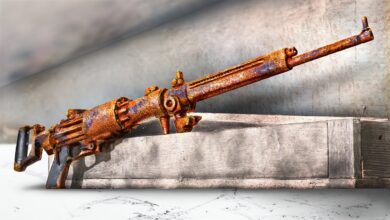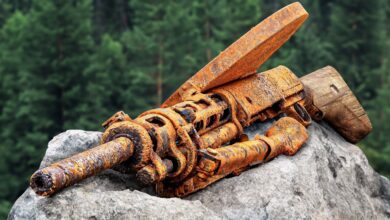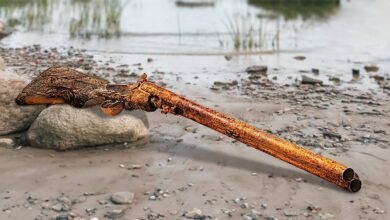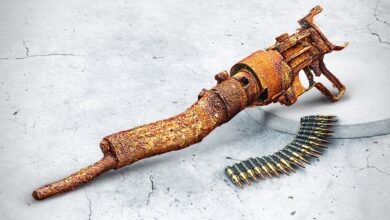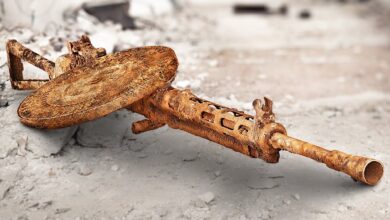Old PPS Machine Gun Restoration
The PPS (Pistolet-Pulemyot Syedova), commonly known as the PPS submachine gun, is one of the most iconic firearms from the Soviet Union. Introduced in the 1940s, the PPS saw widespread use during World War II and beyond. Known for its reliability, simplicity, and ease of production, the PPS remains an enduring symbol of Soviet military ingenuity. However, like many historical firearms, these guns often face the ravages of time. Restoring an old PPS is both a technical challenge and a labor of love, requiring a blend of historical research, mechanical expertise, and craftsmanship.

History of the PPS
Designed by the Soviet engineer Vasily Degtyaryov, the PPS was a compact and effective submachine gun meant for close-quarter combat. The gun saw action in the hands of Soviet soldiers during World War II, where it gained a reputation for being reliable and easy to manufacture. The PPS fired 7.62x25mm Tokarev cartridges, a round that was commonly used across the Soviet arsenal at the time. With its distinctive curved magazine and simple blowback design, the PPS became a standard weapon in many Soviet military units.
After the war, the PPS continued to see use in various conflicts around the world, often being supplied to communist insurgents, revolutionary movements, and military forces in the Eastern Bloc. Though its use declined with the advent of more modern firearms, the PPS’s legacy continues to be appreciated by collectors, historians, and firearm enthusiasts.
Why Restore a PPS?
Restoring an old PPS is not just about preserving a piece of history; it is about ensuring that the legacy of this iconic firearm is maintained for future generations. While many PPS submachine guns are found in worn or damaged condition due to years of service and storage, restoring one can bring it back to life, both as a functional piece of history and as a collectible work of art.
There are several motivations for restoring a PPS:
- Historical Preservation: A restored PPS is a tangible link to a tumultuous era in world history, specifically World War II and the Cold War. Restoring these weapons helps preserve the story of the men and women who fought during these periods.
- Mechanical Preservation: Over time, the moving parts of a firearm can wear down, leading to misfires or mechanical failure. Restoration ensures the integrity of the gun, allowing it to function as originally intended.
- Collectible Value: An original PPS in good working condition is a valuable collector’s item. Restoring an old, rusted, or damaged PPS can increase its value significantly.
- Engineering Mastery: Restoring an old firearm requires deep mechanical knowledge and craftsmanship. For enthusiasts, it’s a chance to engage in a hands-on project that demands precision, problem-solving, and attention to detail.
Challenges of PPS Restoration
Restoring a PPS is a detailed process, and there are a number of challenges that gun collectors and restoration experts face when undertaking the task:
- Finding Original Parts: The PPS was mass-produced in large numbers, but over the years, many of the original parts have become scarce. Finding authentic components such as the magazine, trigger assembly, and recoil spring can be difficult, and some parts may need to be fabricated.
- Rust and Corrosion: Like many firearms, PPS guns that have been stored improperly or left exposed to the elements may suffer from rust and corrosion. Restoring these parts requires careful cleaning, and in some cases, the rust must be carefully removed without damaging the integrity of the gun’s metalwork.
- Barrel and Action Wear: The barrel and internal action of a PPS may have been subject to extensive wear during its years of use. It’s important to inspect these areas closely to ensure that they are still functional. In some cases, re-boring the barrel or replacing worn-out springs and other internal components may be necessary.
- Restoring the Finish: The PPS originally had a simple blued or parkerized finish, but over the years, these finishes can wear off. Restoring the original finish is crucial for both aesthetic and historical accuracy, and it requires knowledge of the original process to achieve the right look.
- Legal Considerations: Depending on the country, restoring a fully functional submachine gun like the PPS may involve legal restrictions. Restoration experts must ensure that they comply with all applicable laws and regulations surrounding firearm ownership and restoration.
The Restoration Process
Restoring a PPS involves several steps, each requiring a different set of skills and tools. Here’s an outline of the general process:
- Disassembly: The first step in restoration is disassembling the PPS completely. This allows the technician to examine every part of the gun in detail and assess the extent of wear or damage.
- Inspection: Each component is carefully inspected for rust, cracks, or other damage. Internal mechanisms such as the bolt and firing pin are checked for functionality.
- Cleaning and Degreasing: A thorough cleaning process is essential to remove any built-up grease, grime, or dirt from the gun’s components. This is typically done using ultrasonic cleaning systems or manual scrubbing with solvents.
- Replacing Worn or Missing Parts: If any parts are found to be missing or irreparably damaged, replacements must be sourced. If authentic parts are unavailable, custom fabrication may be necessary.
- Rust Removal and Refinishing: Rusted parts are carefully treated, often through electrolysis or abrasive cleaning methods. Once cleaned, the parts are refinished to restore the original appearance of the PPS, usually by applying a fresh layer of bluing or parkerizing.
- Reassembly: After the individual parts are cleaned, repaired, or replaced, the PPS is reassembled. The gun is then test-fired to ensure that it functions correctly.
- Final Inspection: A final inspection is conducted to ensure that all parts are in working order, and the gun is safe to handle.
Conclusion
The restoration of the PPS submachine gun is a complex, rewarding process that requires technical expertise and a passion for preserving history. Whether for military collectors, history enthusiasts, or mechanical experts, restoring a PPS is a way to pay homage to one of the Soviet Union’s most iconic weapons. With its distinctive design and historical significance, a well-restored PPS is more than just a firearm; it’s a testament to the ingenuity of its creators and the resilience of the generations that used it in battle.
For those who embark on this restoration journey, the PPS remains not only a piece of military history but also a symbol of craftsmanship, precision, and the enduring legacy of the Second World War.

